The SFP port of a Gigabit switch is an important concept when it comes to computer networking and data transfer speeds. The SFP (Small Form-Factor Pluggable) port, is also known as the mini GBIC (Gigabit Interface Converter).
The SFP module was first introduced in 2001 and has caused a major change in networking. The introduction of the SFP module to replace the previous GBIC (Gigabit Interface Converter) module was largely due to the small size and greater flexibility of the SFP module, making it one of the most important components in modern networks.
SFP is a hot-pluggable module used to transfer data between switches and other network devices.
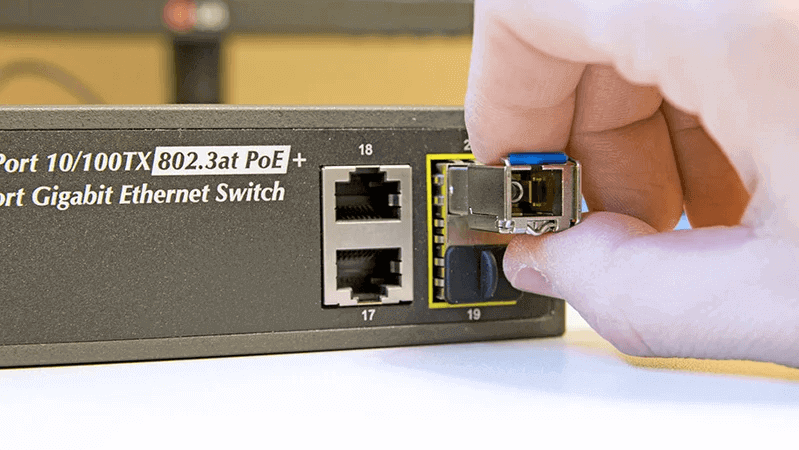
The Definition and Function of the SFP Port
SFP port is a standardized interface that allows users to replace network modules without shutting down the device. It is designed to be compact, easy to install and replace, and is a standardized solution for connecting gigabit Ethernet switches and other network devices, such as routers, fiber converters, etc. The main purpose of the SFP port is to provide flexibility, allowing network administrators to choose different types of SFP modules according to network needs, to achieve different transmission media and rates.
How do SFP Ports Work?
SFP can support various types of transmission media, including fiber, copper cable, etc., as well as different data transmission rates. The working principle of the SFP port involves optical and electrical technologies. Here is a brief explanation of the working process:
Physical connection: First, insert the SFP module gently into the SFP port of the network device. The SFP port is designed as a standardized interface to ensure that the module can be correctly inserted and physically connected to the device.
Power supply: After inserting the SFP module, the device will provide power to the module. This is to enable the electronic components and optical devices inside the SFP module to work properly.
Data transmission: The working principle of the SFP module depends on its type, that is, whether it is fiber or copper cable.
Fiber connection: In fiber connection, the SFP module contains an optical transmitter and an optical receiver. Data is converted from electrical signals in the network device to optical signals and transmitted through the fiber. The sending end of the SFP module uses an optical transmitter to convert electrical signals into laser optical signals and then sends them through fiber. The receiving end of the SFP module uses an optical receiver to convert optical signals back to electrical signals for network device processing.
Copper cable connection: In copper cable connection, the SFP module uses electrical signals for data transmission. Data is sent from electrical signals in the network device through the electrical interface of the SFP module and transmitted through the connected copper cable. This type of connection is suitable for short-distance data transmission, such as connecting devices within the same rack.
Data processing: Whether it is a fiber or copper cable connection, the SFP module may also perform some data processing functions during data transmission, such as error detection, flow control, etc., to ensure data accuracy and reliability.
Hot plugging: An important feature is the hot-plugging nature of the SFP port, which means that you can replace or add SFP modules without shutting down the device. This feature is very convenient for network maintenance and upgrade and can reduce downtime.
What is the Maximum Distance Between Two Devices that can be Accommodated by the SFP Port?
The maximum transmission distance between two devices that can be accommodated by the SFP port depends on multiple factors, including the type of SFP module used, the transmission medium (fiber or copper cable), the strength of the optical signal, the network topology, etc. Different types of SFP modules support different transmission distance ranges.
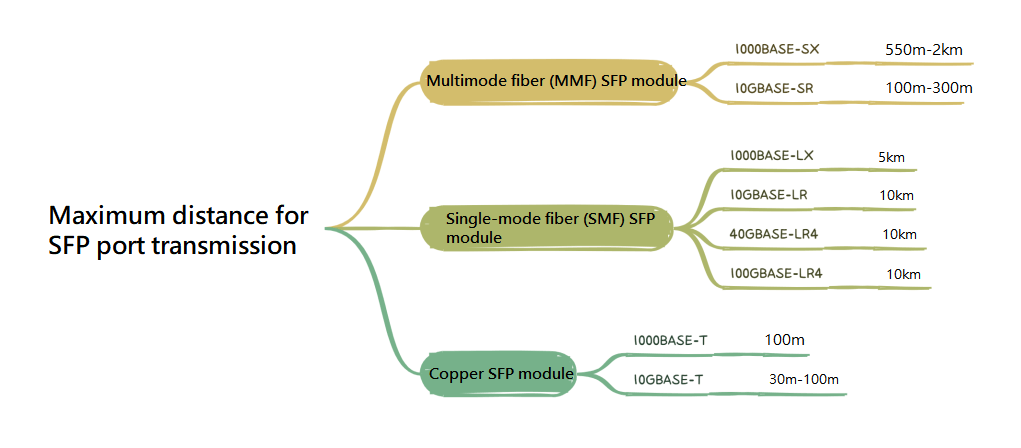
Here are some common SFP module types and their typical maximum transmission distances:
Multi-mode fiber (MMF) SFP modules:
1000BASE-SX: The maximum transmission distance is about 550 meters to 2 kilometers, depending on the fiber type and quality.
10GBASE-SR: The maximum transmission distance is usually in the range of 100 meters to 300 meters, also depending on the fiber quality.
Single-mode fiber (SMF) SFP modules:
1000BASE-LX: The maximum transmission distance is usually within 5 kilometers.
10GBASE-LR: The maximum transmission distance is usually within 10 kilometers.
40GBASE-LR4 and 100GBASE-LR4: The maximum transmission distance can reach 10 kilometers.
Copper SFP modules:
1000BASE-T: The maximum transmission distance is usually 100 meters.
10GBASE-T: The maximum transmission distance is usually 30 meters to 100 meters, depending on the quality and specifications of the copper cable.
Types of SFP Module
According to their different transmission media, transmission rates, and application scenarios, SFP modules can be divided into various types. Here are some common SFP module types:
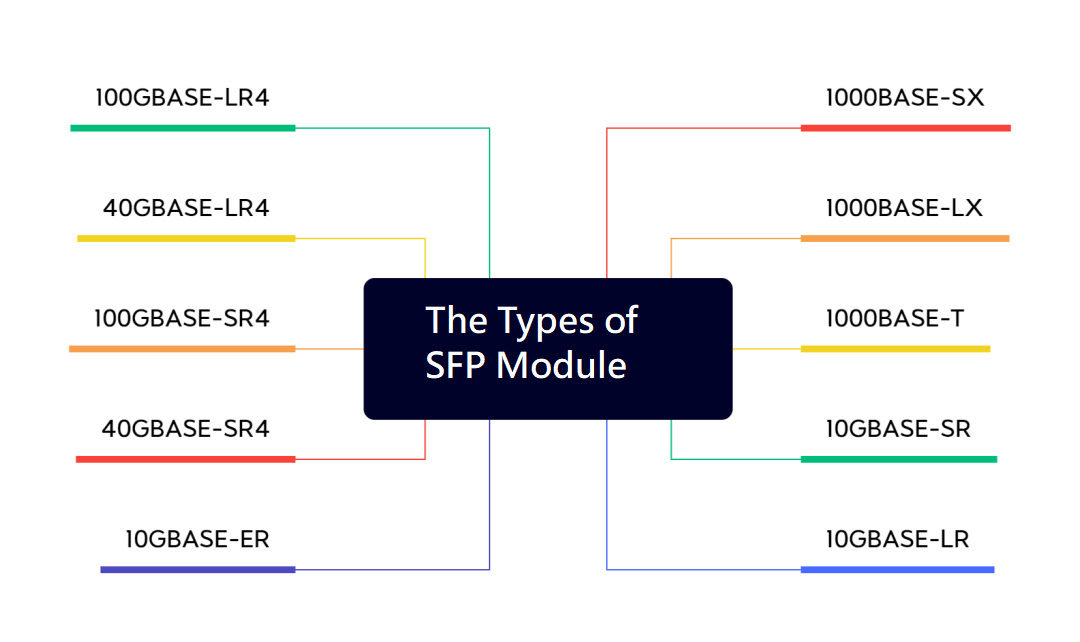
1000BASE-SX: This multi-mode fiber (MMF) SFP module is suitable for short-distance data transmission, usually in the range of 550 meters to 2 kilometers. It uses 850nm of optical wavelength, suitable for environments with relatively short fiber distances.
1000BASE-LX: This is a single-mode fiber (SMF) SFP module, suitable for longer-distance data transmission, usually within 5 kilometers. It uses 1310nm of optical wavelength, suitable for environments with longer fiber distances.
1000BASE-T: This is a copper SFP module that supports data transmission through Cat5e or higher specification copper cables, with a maximum transmission distance of usually 100 meters. It is suitable for short-distance connection needs.
10GBASE-SR: This multi-mode fiber SFP module is suitable for short-distance high-speed data transmission, usually in the range of 100 meters to 300 meters. It uses 850nm of optical wavelength.
10GBASE-LR: This is a single-mode fiber SFP module, suitable for long-distance high-speed data transmission, usually within 10 kilometers. It uses 1310nm of optical wavelength.
10GBASE-ER: This is a longer-distance single-mode fiber SFP module that can support transmission distances up to 40 kilometers.
40GBASE-SR4 and 100GBASE-SR4: These multi-mode fiber SFP modules support 40Gbps and 100Gbps high-speed data transmission, usually suitable for short-distance connections, such as within data centers.
40GBASE-LR4 and 100GBASE-LR4: These single-mode fiber SFP modules support 40Gbps and 100Gbps high-speed data transmission, suitable for long-distance connections, usually with a transmission distance of up to 10 kilometers.
In addition to the above common types, there are many other types of SFP modules, each optimized for specific transmission needs and application scenarios.
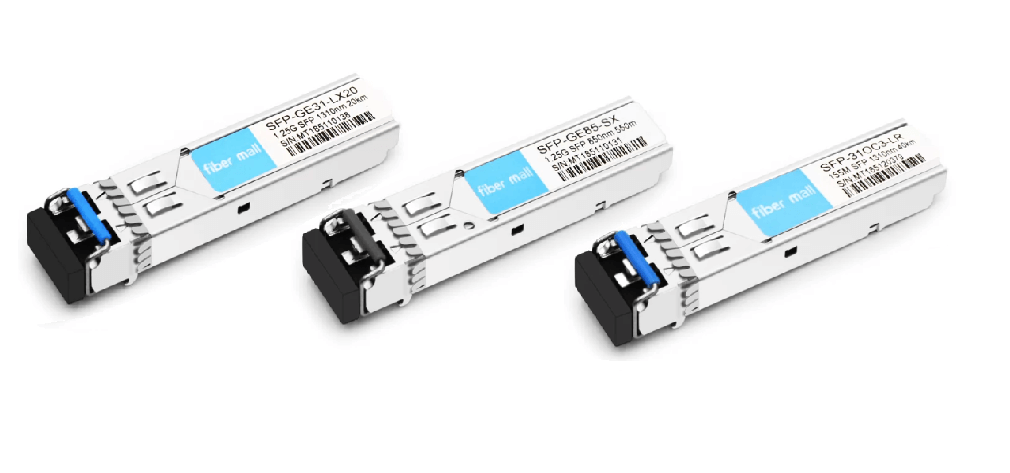
The Advantages of SFP Port
Small size and high density: SFP modules are half the size of GBICs, which allows them to be used in narrower and denser spaces. In modern data centers and network devices, rack space utilization is critical, so the small size of SFP modules allows devices to accommodate more ports, thereby increasing network connection density.
Hot pluggable: The hot pluggable nature of SFP modules allows network administrators to replace or add modules while the device is running, without having to shut down the device. This greatly reduces downtime during maintenance and upgrade processes and improves network availability.
Flexibility: SFP modules can support various types of transmission media, including fiber and copper cable, as well as different transmission rates. This flexibility allows network administrators to choose the appropriate module according to network needs, to meet the requirements of different connections.
Long-distance transmission: SFP modules support various transmission distances, from short distances to long distances, and even up to tens of kilometers. This makes them very useful for building wide-area network connections and long-distance transmission.
Switches that Support SFP Interface
Huawei:
Huawei S5720 series
Huawei S5700 series
Huawei S6700 series
Huawei S9300 series
ZTE (ZTE) :
ZTE S3300 series
ZTE S3500 series
ZTE S3900 series
ZTE S5900 series
Ruijie
Ruijie RG-S2900G-E series
Ruijie RG-S5750E series
Ruijie RG-S7700 series
Ruijie RG-S9250 series
TP-Link:
TP-Link JetStream T1600G series
TP-Link JetStream T2600G series
TP-Link JetStream T3700 series
TP-Link JetStream T4800 series
Cisco:
Cisco Catalyst 2960 Series
Cisco Catalyst 3560 Series
Cisco Catalyst 3850 Series
Cisco Catalyst 4500 Series
**HPE (Hewlett Packard Enterprise)**
HPE OfficeConnect 1920S Series
HPE ProCurve 2520 Series
HPE FlexNetwork 5130 Series
HPE Aruba 2930F Series
Dell:
Dell Networking X-Series
Dell Networking N-Series
Dell PowerConnect 2800 Series
Dell PowerConnect 5500 Series
Juniper Networks:
Juniper EX2200 Series
Juniper EX2300 Series
Juniper EX3400 Series
Juniper EX4300 Series
NETGEAR:
NETGEAR ProSAFE GS108T
NETGEAR ProSAFE GS724T
NETGEAR ProSAFE JGS524E
NETGEAR ProSAFE XS708E
The Importance of SFP Ports in Modern Networks
As the demand for faster and more stable network connections grows among enterprises and institutions, SFP ports on gigabit switches play a key role in modern networks.
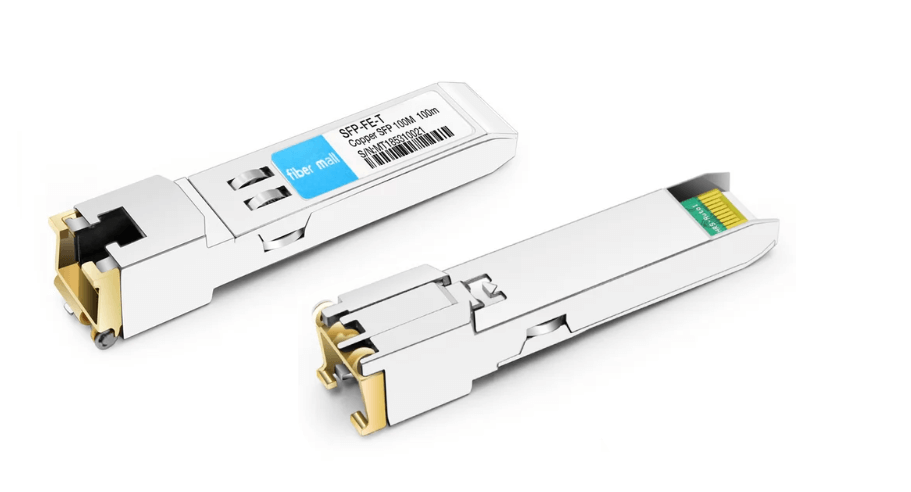
Here are some key applications of SFP ports in modern networks:
Data center network: In data centers, fast and stable data transmission is crucial. SFP ports allow data center administrators to configure network connections according to different needs, to meet the requirements of high-speed data exchange between servers.
Wide area network connection: Through SFP ports, network administrators can choose the appropriate SFP modules, to achieve data transmission over long distances, suitable for wide area network connections across cities, countries, or even continents.
Fiber optic network: Fiber optics is an ideal medium for high-speed data transmission, fiber optic modules connected through SFP ports can provide excellent performance in the network, meeting the requirements of high bandwidth and low latency. Network redundancy: SFP ports also provide the possibility of achieving network redundancy. By configuring redundant links, even if one link fails, another link can still maintain a network connection, ensuring network reliability.
Future expansion: With the continuous advancement of technology, new types of SFP modules emerge, supporting higher transmission rates and larger bandwidth. This makes the network easier to expand in the future, to meet the growing network demand.
In summary, SFP ports on gigabit switches as an important component of modern networks, provide network administrators with flexibility, scalability, and maintainability. It not only meets the requirements of different network needs but also makes important contributions to network stability and reliability. With the continuous development of technology, SFP ports will continue to play an important role in the network field, promoting the improvement of network connection speed and performance.
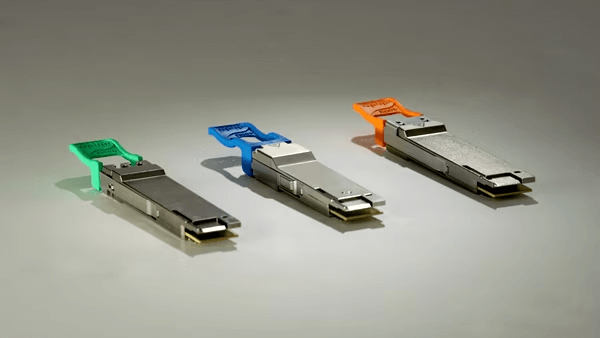
The Evolution and Development of QSFP
First generation QSFP
The earliest QSFP standard appeared in 2006, it introduced the characteristics of small size and high-density connection. The first generation QSFP supports 4-channel transmission, each channel’s rate is usually 10Gbps, suitable for data center interconnection and server connection. Its appearance opened a new era of high-speed data transmission.
QSFP+ (Quad Small Form-Factor Pluggable Plus)
With the growth of data centers, the demand for higher transmission rates also increased. QSFP+ as an upgrade to the first generation QSFP, supports a 40Gbps transmission rate. Its small size and hot-pluggable function make QSFP+ an ideal choice for high-density connections between switches, servers, and storage devices in data centers. At the same time, QSFP+ is also widely used in 10G Ethernet and other fields.
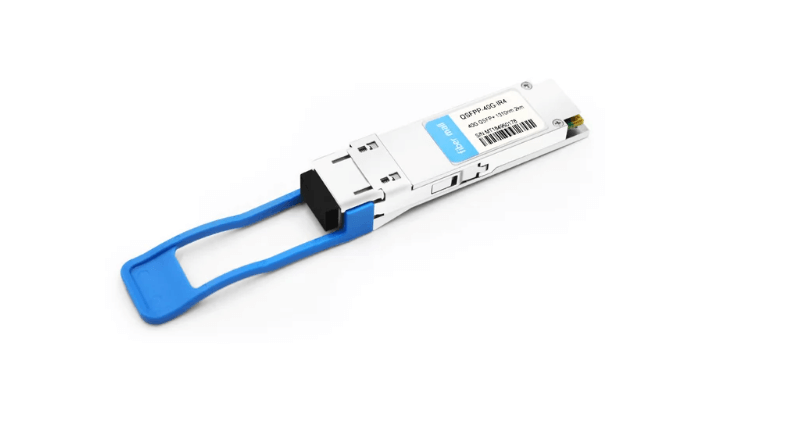
QSFP28
With the advent of the digital age, the demand for transmission rates is more urgent. The QSFP28 standard was released in 2016, supporting a 100Gbps transmission rate per channel, making high-speed interconnection in data centers more efficient. The emergence of QSFP28 modules makes it possible to improve the performance of large-scale data processing, cloud computing and supercomputers, and other fields.
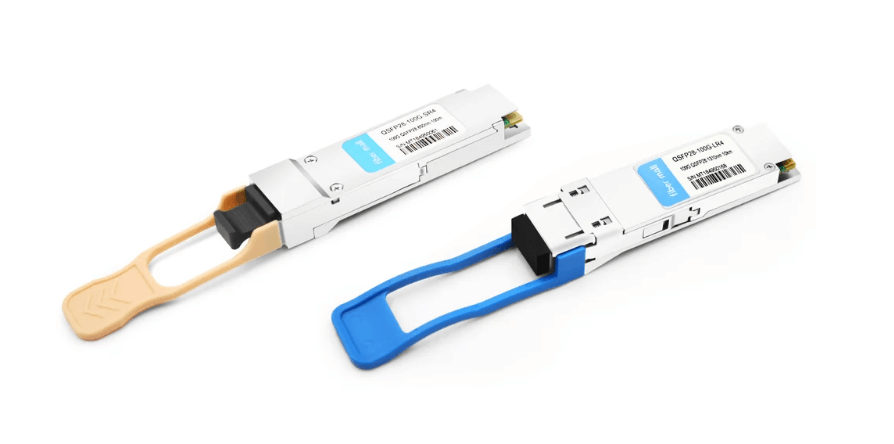
QSFP-DD (Double Density)
The continuous expansion of data centers makes the density of connection ports a challenge. The QSFP-DD standard achieves double the port density on the basis of QSFP size, supporting 200Gbps and 400Gbps transmission rates. This high degree of flexibility makes QSFP-DD more important in high-speed interconnection in large data centers, providing strong support for high-performance computing and large-scale data processing.
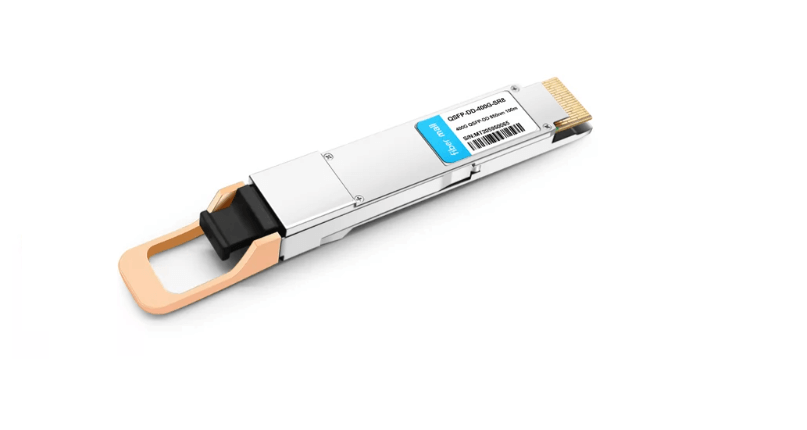
OSFP (Octal Small Form-Factor Pluggable)
In addition to QSFP-DD, there is another related standard, OSFP, which is also designed for high-speed transmission. OSFP supports 400Gbps and 800Gbps transmission rates and compares with QSFP-DD. Although OSFP may have some advantages in some aspects, QSFP-DD still occupies an important position in the market.
Port and Channel
One of the characteristics of QSFP modules is their multi-channel design. Typical QSFP modules support 4 channels, and through multi-channel design, they can achieve high-bandwidth transmission in a relatively small size. In addition, with the evolution of standards, some modules also achieve 8-channel transmission, further improving port density and transmission capacity.
Transmission Rate and Transmission Distance
Different types of QSFP modules support different transmission rates. From 10Gbps to 400Gbps, different rates can meet the needs of different scenarios. At the same time, the transmission distance is also affected by factors such as fiber type, module type, etc. Short-distance connections usually use multi-mode fiber, while long-distance connections require single-mode fiber.
Optical Module Type
According to the different transmission distances and use, QSFP modules are divided into several types. SR (Short Range) modules are suitable for short-distance connections, LR (Long Range) modules are suitable for medium-distance transmission, while ER (Extended Range) and ZR (Zero Dispersion Range) modules are suitable for longer-distance transmission. This diversity makes QSFP able to meet various different application scenarios.
Additional Features
In addition to high-speed transmission, QSFP modules also have some additional features built in. The hot-pluggable function makes the module replacement more convenient, and the digital diagnostic monitoring function can help administrators monitor the module performance and status in real-time, thus carrying out network maintenance and troubleshooting.
The Rate of QSFP Optical Module
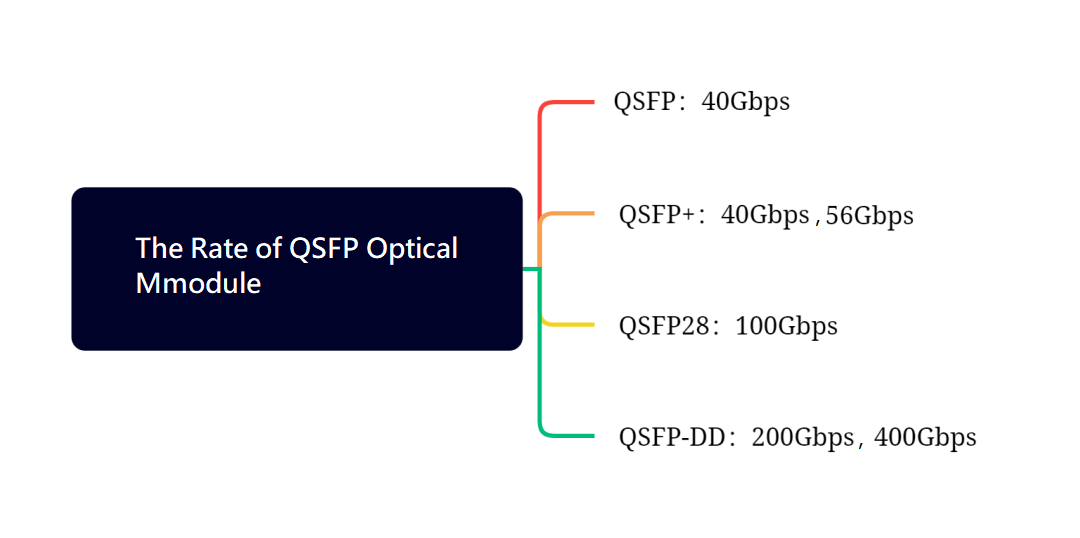
QSFP: 40Gbps
The earliest QSFP optical module was launched in 2006, it introduced the concept of miniaturization and high-density connection. The first generation QSFP supports 4-channel transmission, each channel’s rate is usually 10Gbps. This means that the total transmission rate of each module reaches 40Gbps. This design makes the first-generation QSFP optical module play an important role in data center interconnection, server connection, and switch link.
QSFP+: 40Gbps and 56Gbps
With the continuous expansion of data centers and the demand for higher transmission rates, QSFP+ optical module becomes the key to development. QSFP+ supports higher transmission rate options, including:
- 40Gbps: The transmission rate per channel is 10Gbps, and the total rate of 4 channels reaches 40Gbps. This module is widely used in high-density connections and 40G Ethernet.
- 56Gbps: The transmission rate per channel is increased to 14Gbps, and the total rate of 4 channels reaches 56Gbps. This rate of the QSFP+ module provides higher bandwidth for some specific applications.
QSFP28: 100Gbps
With the advent of the digital age, the demand for transmission rates further increases. The QSFP28 standard was released in 2016, supporting a 100Gbps transmission rate per channel. This makes the high-speed interconnection in data centers more efficient, helping to cope with the growing data processing demand. By using four channels, QSFP28 modules pack up to 100Gbps of data transmission rate into a compact module(100G QSFP28).
QSFP-DD: 200Gbps and 400Gbps
As the scale of data processing continues to expand, the high-density connection becomes crucial. The QSFP-DD standard came into being, it supports higher transmission rate options, including:
- 200Gbps: The transmission rate per channel is 50Gbps, and the total rate of 4 channels reaches 200Gbps. This module is suitable for scenarios where there is an urgent need for a high-bandwidth connection.
- 400Gbps: The transmission rate per channel is increased to 100Gbps, and the total rate of 4 channels reaches 400Gbps. This high-density connection is suitable for large-scale data processing and high-performance computing in data centers.
SFP vs. QSFP
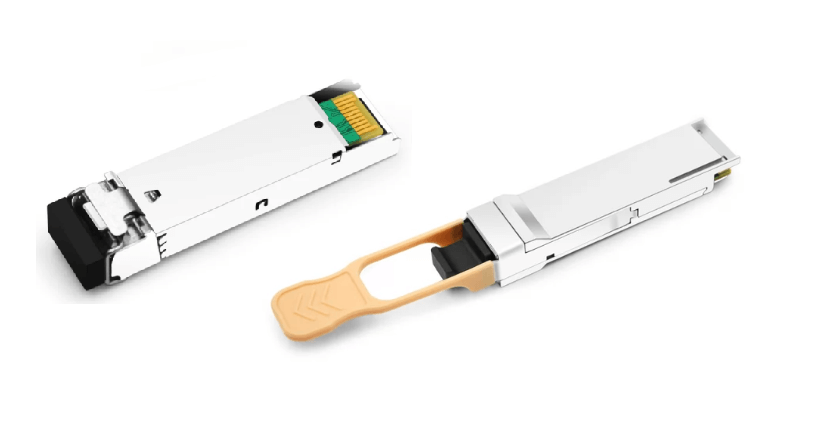
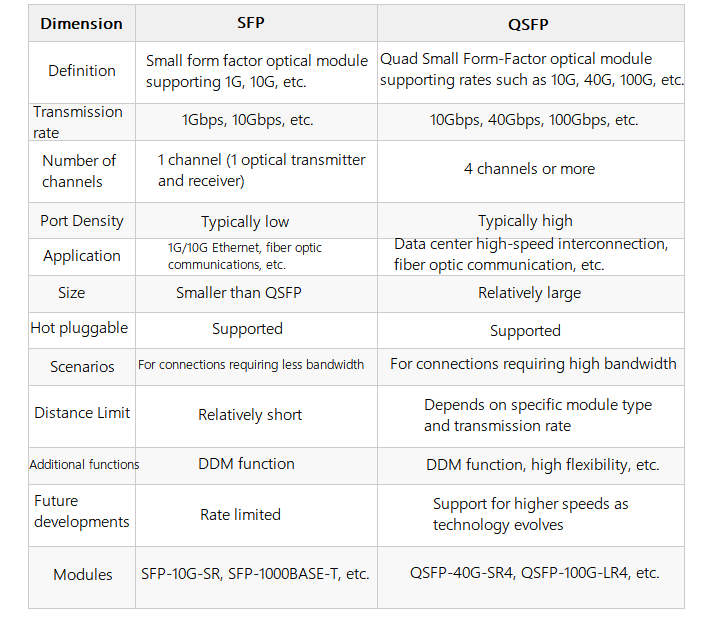
The Application of QSFP
Data center network
In data centers, high-speed interconnection is crucial for achieving high-performance data processing. QSFP modules play a key role in data center networks, connecting various switches, servers, and storage devices. Whether it is cloud computing, large-scale data processing, or artificial intelligence, QSFP modules silently support the fast transmission of data behind the scenes.
Supercomputer and high-performance computing
Supercomputers need to process massive data and complex computing tasks, which require low-latency, high-bandwidth connections. QSFP modules, with their high-speed and low-latency characteristics, become the ideal choice for connection within supercomputers. Whether it is in scientific research, weather forecasting, or new drug development, supercomputers rely on QSFP modules to achieve fast data transmission and collaborative computing.
Communication network
In communication networks, high-speed data transmission is essential for maintaining stable connections and delivering large amounts of information. QSFP modules are widely used in fiber optic communication and metropolitan area networks, to support high-bandwidth data transmission between different regions. From video streaming to online gaming, QSFP modules provide stable and efficient network connections for various interconnection activities.
The Future Prospects of QSFP
Continuously increasing transmission rates
With the further development of the digital age, the demand for high-speed data transmission will continue to increase. QSFP standards will continue to evolve, supporting higher transmission rates. From 800Gbps, 1.6Tbps, or even higher transmission rates, QSFP modules will continue to meet the growing transmission demand in the future.
The impact of new fiber optic technology
With the continuous innovation of fiber optic technology, the emergence of new types of fiber optics will have an impact on the performance and transmission distance of QSFP modules. New fiber optic technology may provide higher-quality signal transmission, enabling QSFP modules to achieve high-speed data transmission over longer distances, thus expanding their application range.
QSFP as a key component of high-speed data transmission, plays an important role in modern communication and data center fields. From the first generation QSFP to QSFP-DD, its evolution and development have been meeting the growing transmission demand. The continuous innovation of technology makes QSFP modules not only able to achieve high-speed transmission, but also adapt to different transmission distances and application scenarios. With the continuous development of technology, we can expect to see higher-speed and more efficient QSFP modules appear, continuing to promote the progress of communication and data center fields.
Related Products:
-
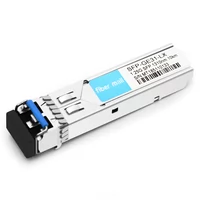 SFP-GE31-LX 1000Base LX SFP 1310nm 10km LC SMF DDM Transceiver Module
$5.00
SFP-GE31-LX 1000Base LX SFP 1310nm 10km LC SMF DDM Transceiver Module
$5.00
-
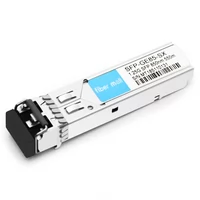 SFP-GE85-SX 1000Base SFP SX 850nm 550m LC MMF DDM Transceiver Module
$5.00
SFP-GE85-SX 1000Base SFP SX 850nm 550m LC MMF DDM Transceiver Module
$5.00
-
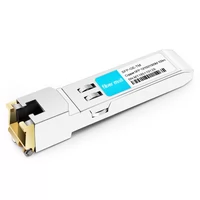 SFP-GE-TM 10/100/1000M Copper SFP 100m RJ45 Transceiver Module
$15.00
SFP-GE-TM 10/100/1000M Copper SFP 100m RJ45 Transceiver Module
$15.00
-
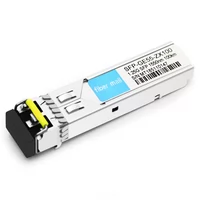 SFP-GE55-ZX100 1000Base SFP ZX100 1550nm 100km LC SMF DDM Transceiver Module
$35.00
SFP-GE55-ZX100 1000Base SFP ZX100 1550nm 100km LC SMF DDM Transceiver Module
$35.00
-
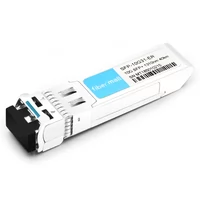 SFP-10G31-ER 10G SFP+ ER 1310nm 40km LC SMF DDM Transceiver Module
$25.00
SFP-10G31-ER 10G SFP+ ER 1310nm 40km LC SMF DDM Transceiver Module
$25.00
-
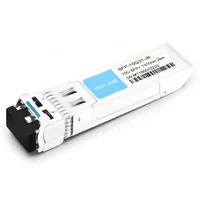 SFP-10G31-IR 10G SFP+ IR 1310nm 2km LC SMF DDM Transceiver Module
$15.00
SFP-10G31-IR 10G SFP+ IR 1310nm 2km LC SMF DDM Transceiver Module
$15.00
-
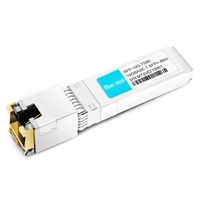 SFP-10G-TS80 10GBase-T Copper SFP+ to RJ45 80m Transceiver Module
$55.00
SFP-10G-TS80 10GBase-T Copper SFP+ to RJ45 80m Transceiver Module
$55.00
-
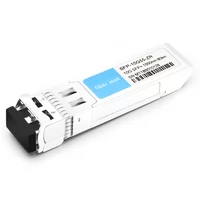 SFP-10G55-ZR 10G SFP+ ZR 1550nm 80km LC SMF DDM Transceiver Module
$150.00
SFP-10G55-ZR 10G SFP+ ZR 1550nm 80km LC SMF DDM Transceiver Module
$150.00
-
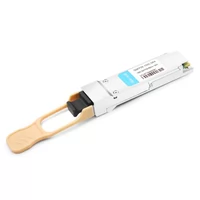 QSFP28-100G-SR4 100G QSFP28 SR4 850nm 100m MTP/MPO MMF DDM Transceiver Module
$40.00
QSFP28-100G-SR4 100G QSFP28 SR4 850nm 100m MTP/MPO MMF DDM Transceiver Module
$40.00
-
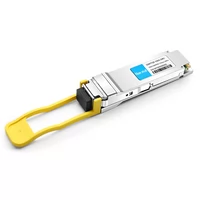 QSFP28-100G-DR1 100G QSFP28 Single Lambda DR 1310nm 500m LC SMF with FEC DDM Optical Transceiver
$180.00
QSFP28-100G-DR1 100G QSFP28 Single Lambda DR 1310nm 500m LC SMF with FEC DDM Optical Transceiver
$180.00
-
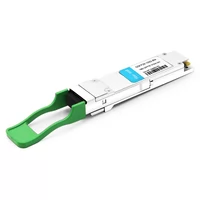 QSFP28-100G-IR4 100G QSFP28 IR4 1310nm (CWDM4) 2km LC SMF DDM Transceiver Module
$110.00
QSFP28-100G-IR4 100G QSFP28 IR4 1310nm (CWDM4) 2km LC SMF DDM Transceiver Module
$110.00
-
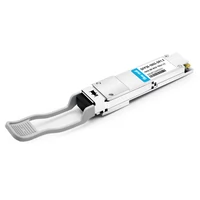 QSFP28-100G-SR1.2 Single Rate 100G QSFP28 BIDI 850nm & 900nm 100m LC MMF DDM Optical Transceiver
$280.00
QSFP28-100G-SR1.2 Single Rate 100G QSFP28 BIDI 850nm & 900nm 100m LC MMF DDM Optical Transceiver
$280.00
-
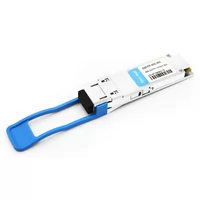 QSFPP-40G-IR4 40G QSFP+ IR4 1310nm (CWDM4) 2km LC SMF DDM Transceiver Module
$129.00
QSFPP-40G-IR4 40G QSFP+ IR4 1310nm (CWDM4) 2km LC SMF DDM Transceiver Module
$129.00
-
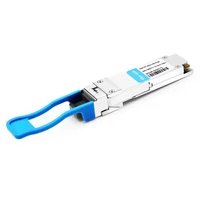 QSFPP-40G-LR4-PSM 40G QSFP+ LR4 PSM 1310nm 10km MTP/MPO SMF DDM Transceiver Module
$149.00
QSFPP-40G-LR4-PSM 40G QSFP+ LR4 PSM 1310nm 10km MTP/MPO SMF DDM Transceiver Module
$149.00
-
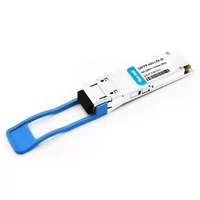 Cisco QSFP-40G-LR4-20 Compatible 40G QSFP+ LR4 1310nm CWDM4 20km LC SMF DDM Transceiver Module
$175.00
Cisco QSFP-40G-LR4-20 Compatible 40G QSFP+ LR4 1310nm CWDM4 20km LC SMF DDM Transceiver Module
$175.00
-
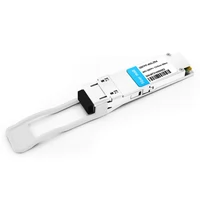 QSFPP-40G-ZR4 40G QSFP+ ZR4 LWDM4 80km LC SMF DDM Optical Transceiver Module
$1200.00
QSFPP-40G-ZR4 40G QSFP+ ZR4 LWDM4 80km LC SMF DDM Optical Transceiver Module
$1200.00
-
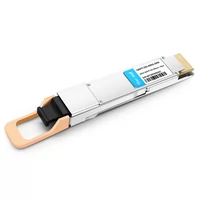 QSFP-DD-400G-SR8 400G QSFP-DD SR8 PAM4 850nm 100m MTP/MPO OM3 FEC Optical Transceiver Module
$180.00
QSFP-DD-400G-SR8 400G QSFP-DD SR8 PAM4 850nm 100m MTP/MPO OM3 FEC Optical Transceiver Module
$180.00
-
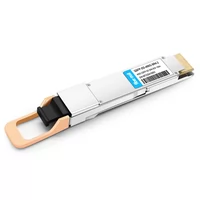 QSFP-DD-400G-SR4.2 400Gb/s QSFP-DD SR4 BiDi PAM4 850nm/910nm 100m/150m OM4/OM5 MMF MPO-12 FEC Optical Transceiver Module
$1000.00
QSFP-DD-400G-SR4.2 400Gb/s QSFP-DD SR4 BiDi PAM4 850nm/910nm 100m/150m OM4/OM5 MMF MPO-12 FEC Optical Transceiver Module
$1000.00
-
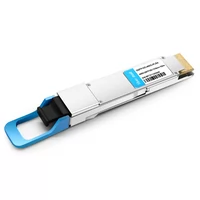 QSFP-DD-400G-PLR4 400G QSFP-DD PLR4 PAM4 1310nm 10km MTP/MPO-12 SMF FEC Optical Transceiver Module
$1000.00
QSFP-DD-400G-PLR4 400G QSFP-DD PLR4 PAM4 1310nm 10km MTP/MPO-12 SMF FEC Optical Transceiver Module
$1000.00
-
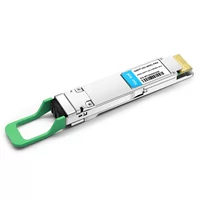 QSFP-DD-400G-FR4 400G QSFP-DD FR4 PAM4 CWDM4 2km LC SMF FEC Optical Transceiver Module
$600.00
QSFP-DD-400G-FR4 400G QSFP-DD FR4 PAM4 CWDM4 2km LC SMF FEC Optical Transceiver Module
$600.00
